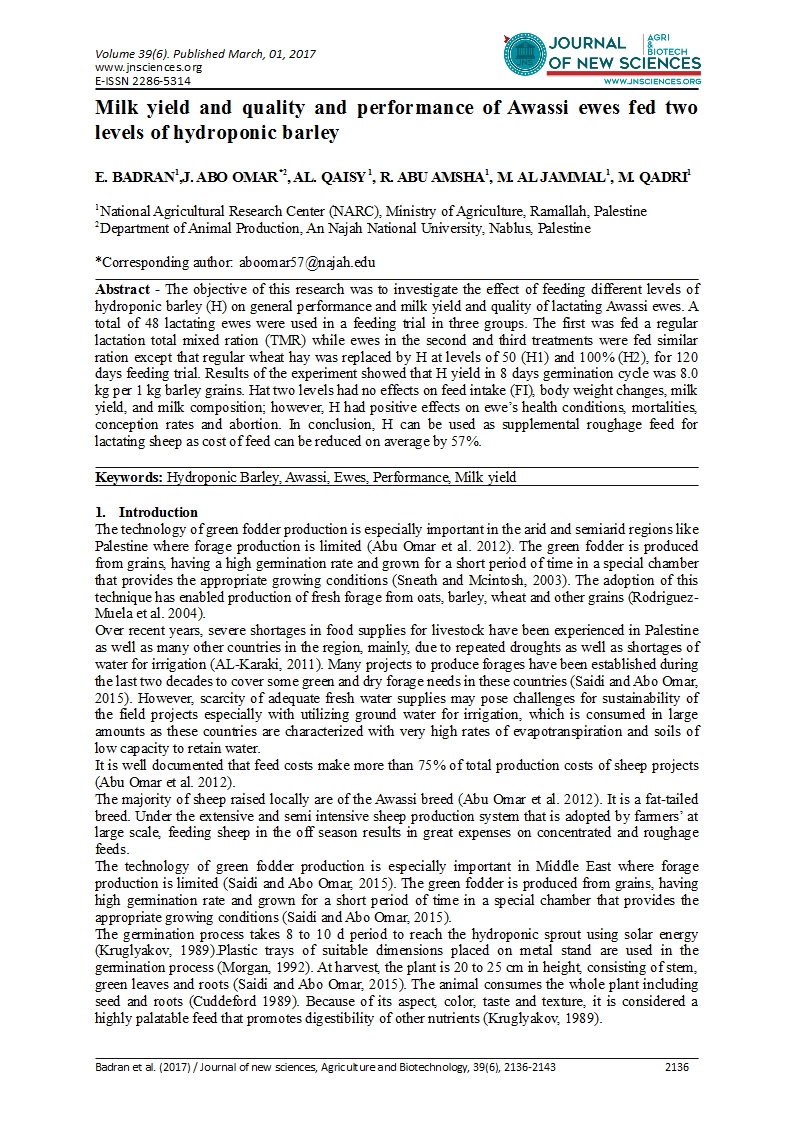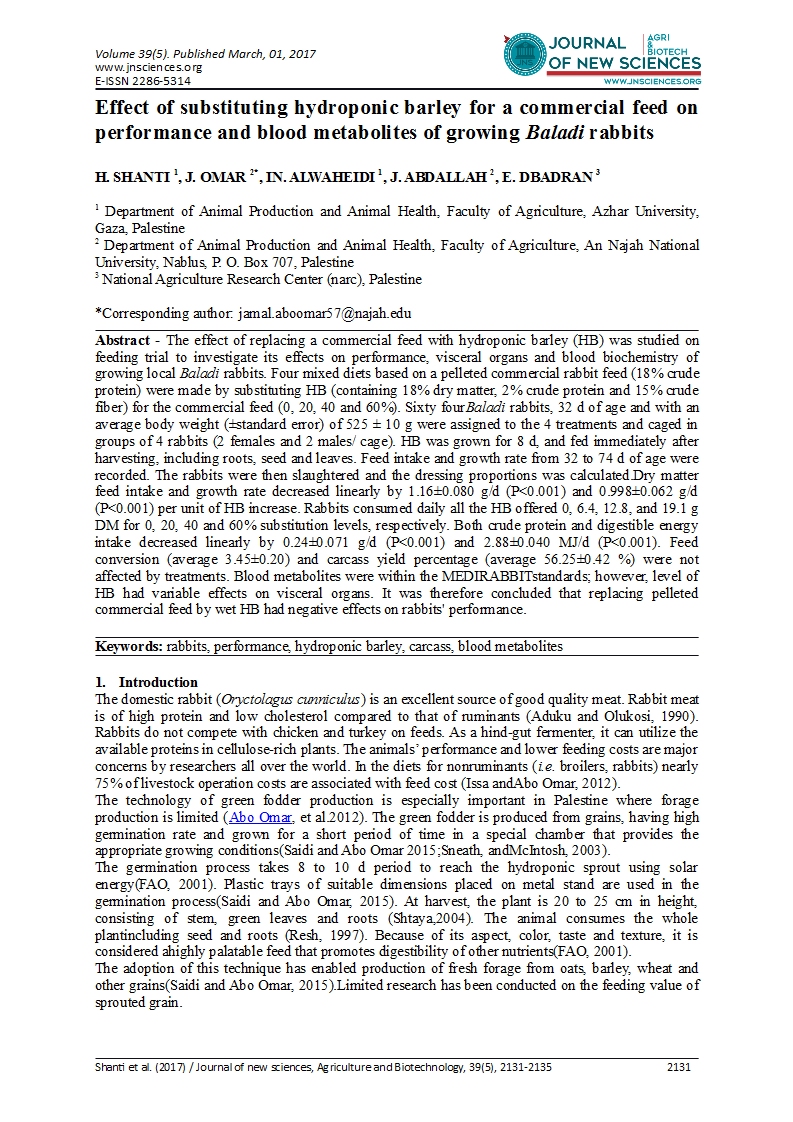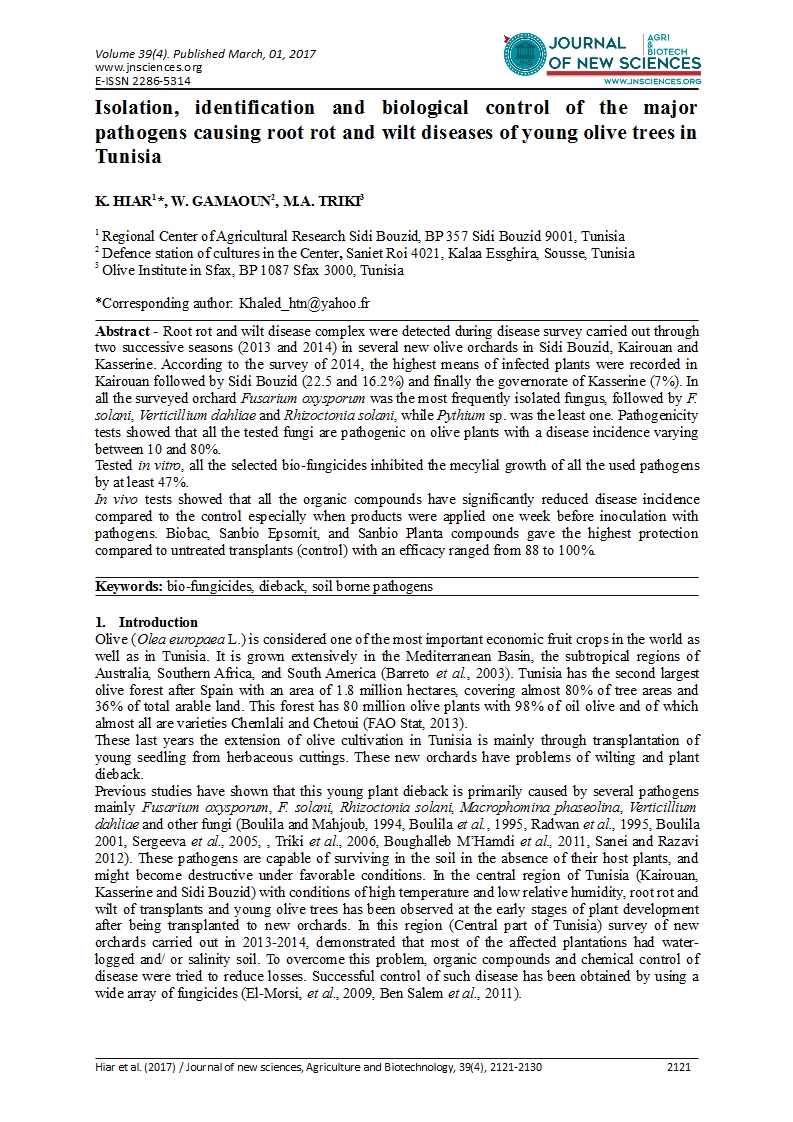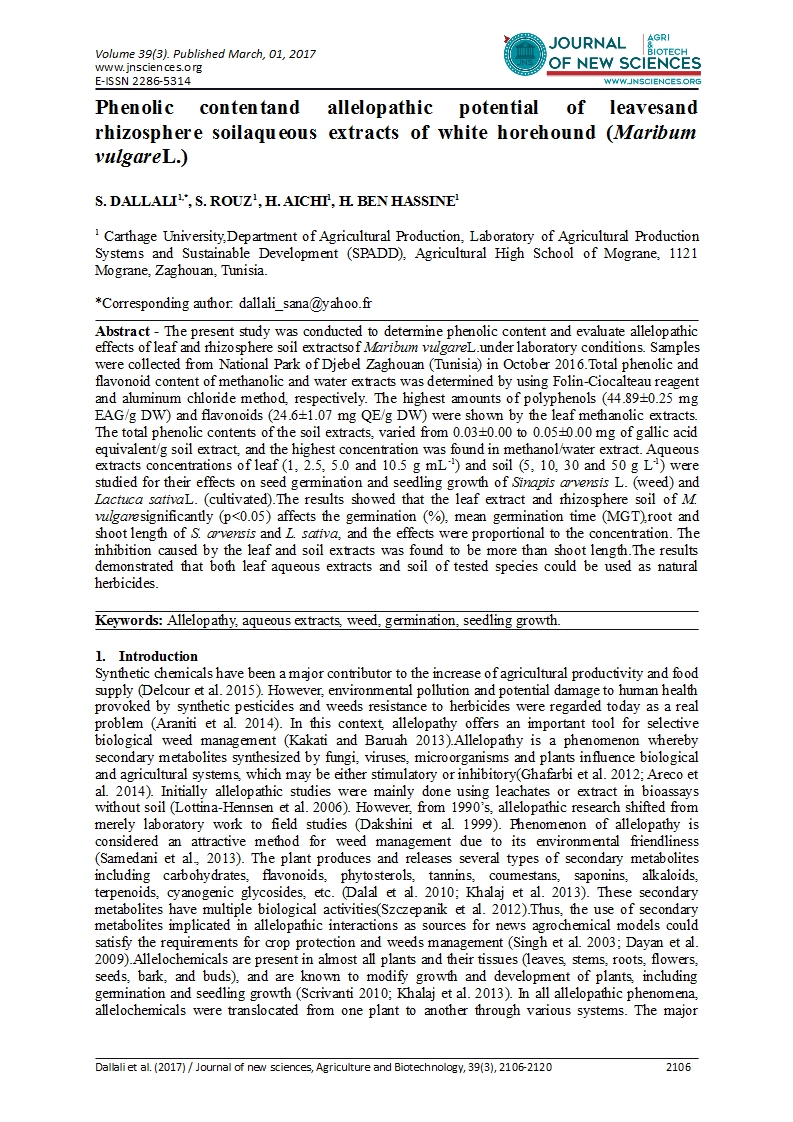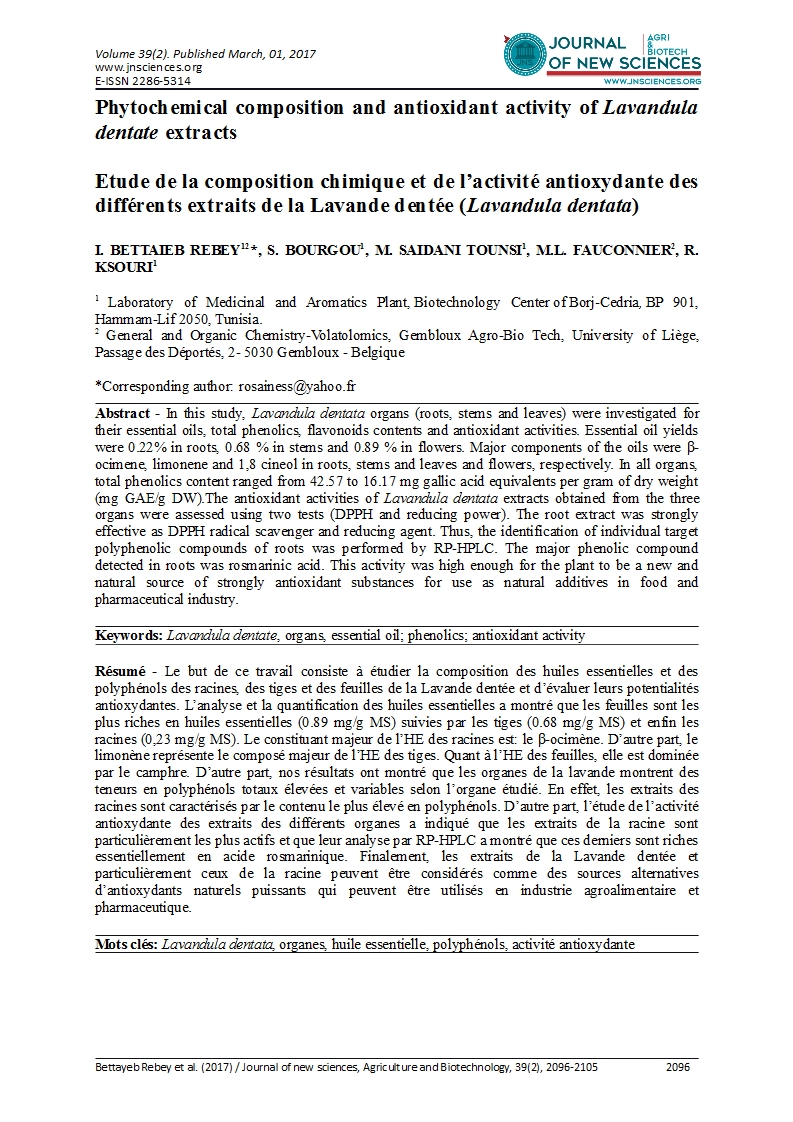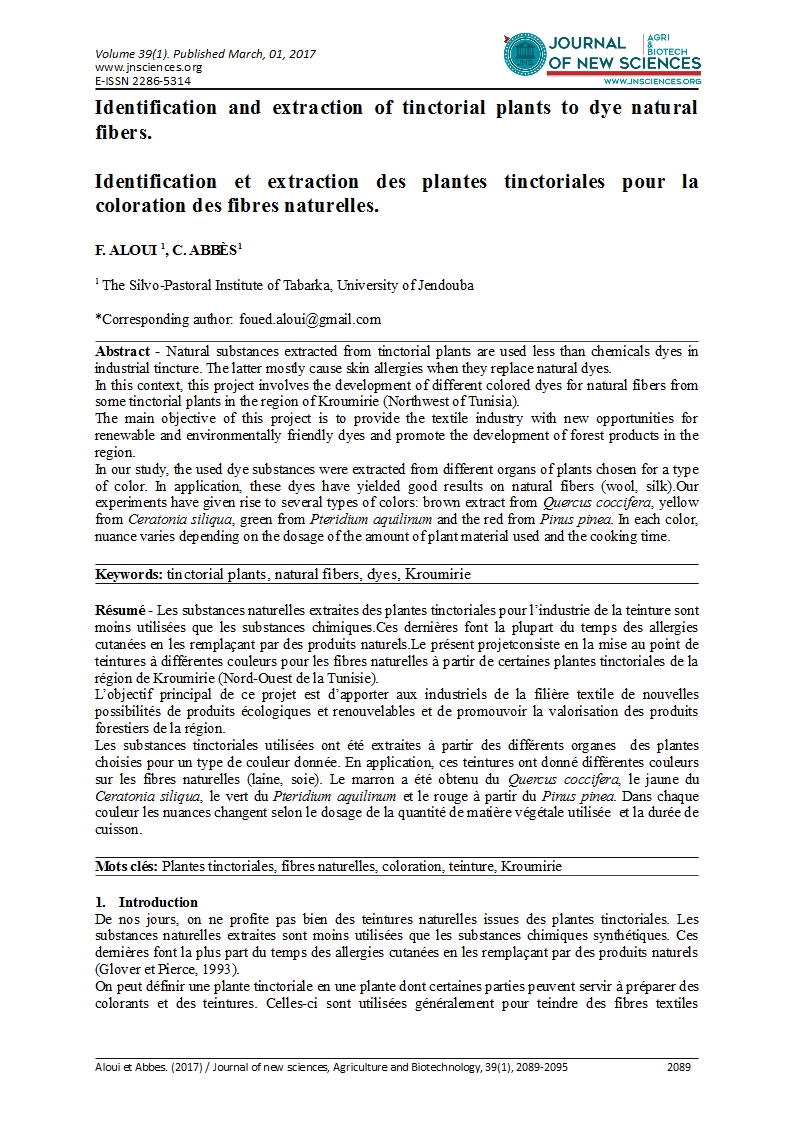Etude de la composition chimique et de l’activité antioxydante des différents extraits de la Lavande dentée (Lavandula dentata)
I. BETTAIEB REBEY12*
S. BOURGOU1
M. SAIDANI TOUNSI1
M.L. FAUCONNIER2,
R. KSOURI1
1 Laboratory of Medicinal and Aromatics Plant, Biotechnology Center of Borj-Cedria, BP 901, Hammam-Lif 2050, Tunisia.
2 General and Organic Chemistry-Volatolomics, Gembloux Agro-Bio Tech, University of Liège, Passage des Déportés, 2- 5030 Gembloux - Belgique
Abstract - In this study, Lavandula dentata organs (roots, stems and leaves) were investigated for their essential oils, total phenolics, flavonoids contents and antioxidant activities. Essential oil yields were 0.22% in roots, 0.68 % in stems and 0.89 % in flowers. Major components of the oils were β-ocimene, limonene and 1,8 cineol in roots, stems and leaves and flowers, respectively. In all organs, total phenolics content ranged from 42.57 to 16.17 mg gallic acid equivalents per gram of dry weight (mg GAE/g DW).The antioxidant activities of Lavandula dentata extracts obtained from the three organs were assessed using two tests (DPPH and reducing power). The root extract was strongly effective as DPPH radical scavenger and reducing agent. Thus, the identification of individual target polyphenolic compounds of roots was performed by RP-HPLC. The major phenolic compound detected in roots was rosmarinic acid. This activity was high enough for the plant to be a new and natural source of strongly antioxidant substances for use as natural additives in food and pharmaceutical industry.
Keywords: Lavandula dentate, organs, essential oil; phenolics; antioxidant activity
Résumé - Le but de ce travail consiste à étudier la composition des huiles essentielles et des polyphénols des racines, des tiges et des feuilles de la Lavande dentée et d’évaluer leurs potentialités antioxydantes. L’analyse et la quantification des huiles essentielles a montré que les feuilles sont les plus riches en huiles essentielles (0.89 mg/g MS) suivies par les tiges (0.68 mg/g MS) et enfin les racines (0,23 mg/g MS). Le constituant majeur de l’HE des racines est: le β-ocimène. D’autre part, le limonène représente le composé majeur de l’HE des tiges. Quant à l’HE des feuilles, elle est dominée par le camphre. D’autre part, nos résultats ont montré que les organes de la lavande montrent des teneurs en polyphénols totaux élevées et variables selon l’organe étudié. En effet, les extraits des racines sont caractérisés par le contenu le plus élevé en polyphénols. D’autre part, l’étude de l’activité antioxydante des extraits des différents organes a indiqué que les extraits de la racine sont particulièrement les plus actifs et que leur analyse par RP-HPLC a montré que ces derniers sont riches essentiellement en acide rosmarinique. Finalement, les extraits de la Lavande dentée et particulièrement ceux de la racine peuvent être considérés comme des sources alternatives d’antioxydants naturels puissants qui peuvent être utilisés en industrie agroalimentaire et pharmaceutique.
Mots clés: Lavandula dentata, organes, huile essentielle, polyphénols, activité antioxydante
Read more
